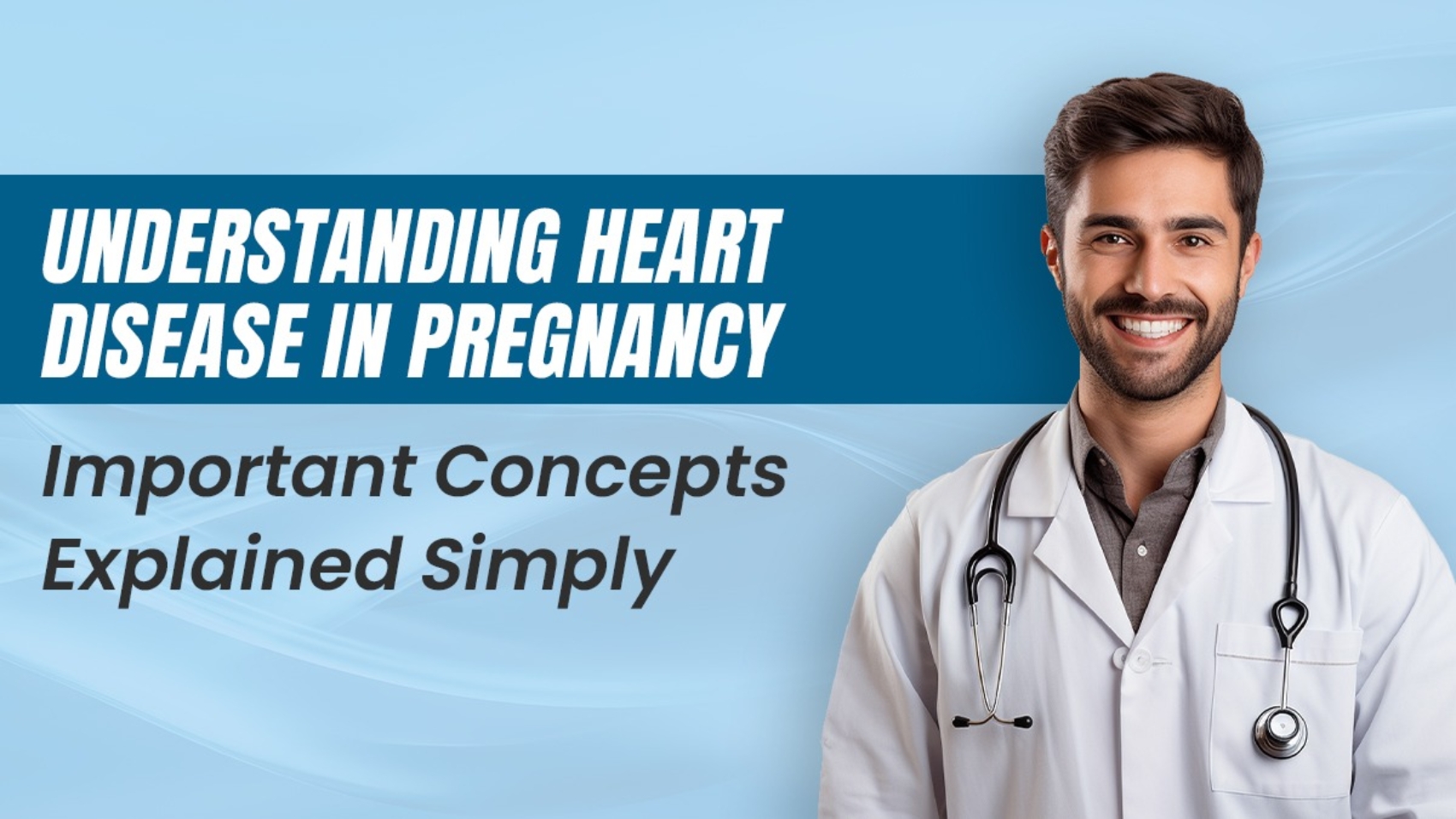Estimated reading time: 4 minutes
Heart diseases in pregnancy are among the most important and challenging topics for both doctors and students preparing for exams. Let’s understand two important parts — the MWHO classification of heart disease in pregnancy and Peripartum Cardiomyopathy (PPCM) — simply.
- MWHO Classification – What It Means
The first question discussed was:
Which maternal conditions are classified as MWHO Class 4 (pregnancy contraindicated)?
To answer this, we should know what the MWHO classification is.
Earlier, the WHO classification of heart disease in pregnancy was based only on the type of heart disease, not on how severe the symptoms were. But this was not very helpful because two women with the same disease could have very different risk levels.
So, doctors started using a system that combines:
- The type of disease (WHO classification)
- The severity of symptoms (NYHA classification)
Later, a modified version called MWHO 2.0 came, which also includes the CARPREG 2.0 score — this helps predict how risky the pregnancy might be for a woman with heart disease.
In short, MWHO 2.0 = WHO classification + CARPREG 2.0 risk score.
Click Here to Watch: Ace Your Exams: MCQ Discussion on Heart Disease Explained
MWHO Class 4 – When Pregnancy Should Be Avoided
You don’t have to remember all the classes. The most important one is Class 4, which means pregnancy is contraindicated — it is too risky for the mother.
If a woman with Class 4 heart disease becomes pregnant, doctors usually advise termination because continuing pregnancy can lead to severe complications or even death.
Conditions under MWHO Class 4:
- Severe aortic stenosis (valve area <1 cm²)
- Eisenmenger syndrome (reversal of blood flow causing cyanosis)
- Marfan syndrome with an aortic root >5 cm
- Aortic root dilatation >4.5 cm (even without Marfan’s)
- Ejection fraction <30% (due to any cause like PPCM or old MI)
- Severe hypertrophic cardiomyopathy (HOCM)
These are high-risk conditions because the heart cannot handle the extra load of pregnancy.
Example question:
“Which of the following is MWHO Class 4?”
→ Answer: Pulmonary hypertension (PA pressure >70 mmHg)
- Peripartum Cardiomyopathy (PPCM) – What It Is
PPCM is another important topic. It means heart failure that happens near the end of pregnancy or soon after delivery, without any other known cause. The ejection fraction is usually below 45%.
It is a diagnosis of exclusion, meaning other causes of heart failure must first be ruled out.
Why PPCM Happens?
It is explained by the two-hit theory:
- Some women have a genetic predisposition.
- During pregnancy, the hormone prolactin increases. In certain women, prolactin breaks down into a harmful fragment (16 kDa) that damages heart muscle and blood vessels.
This toxic fragment causes endothelial damage, reduces blood supply to the heart, and leads to weak heart pumping.
If the woman also has preeclampsia, which releases more harmful anti-angiogenic factors, the risk increases even more.
What Happens in PPCM?
- The heart muscle becomes weak and enlarged
- The pumping function reduces (EF <45%)
- Blood starts backing up into the lungs → breathlessness and swelling
- Both the left and right sides of the heart may fail in severe cases
Common Symptoms and Complications
- Shortness of breath
- Fatigue and swelling in the feet
- Cough due to fluid in the lungs
- Low oxygen levels
- In severe cases, cardiac arrest or death
Can the Patient Recover?
Recovery depends on how early it is diagnosed and treated.
With timely treatment — diuretics, beta-blockers, and sometimes bromocriptine (which stops prolactin release) — many women recover well. But in severe cases, the heart may remain weak permanently.
To learn more about such insightful sessions, subscribe to Conceptual OBG.
In simple terms
Understanding heart disease in pregnancy isn’t just about remembering lists. It’s about knowing why these diseases are risky, how they affect the mother, and what can be done to prevent complications.

